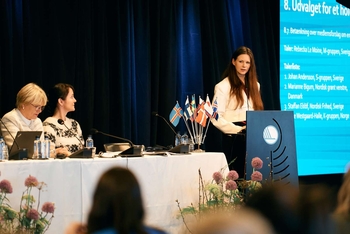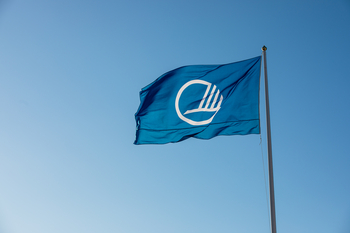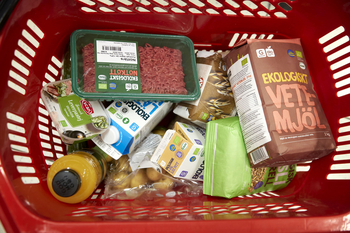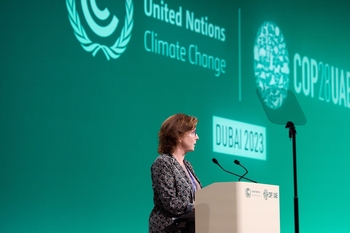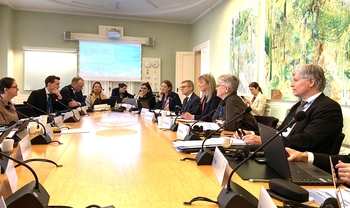Fish, the future and the blue bioeconomy
“Climate change, urbanisation and rapidly growing demand for food and fresh water make new sustainable solutions a necessity. The innovation potential is huge,” the Finnish Minister for Nordic Co-operation, Anne Berner, said in her opening speech to the BlueNordic conference, in Helsinki on 31 May–1 June.
Shoes, cosmetics and medicine from fish
Healthy ecosystems in oceans, lakes and rivers are the foundations on which a blue bioeconomy is built. In practice this involves more efficient use of natural resources. A good example if this is the way the Icelandic fisheries industry has increased profits despite sharp falls in quotas in recent years.
“Instead of just exporting whole fish, we now sell them in parts. X-ray machines determine whether a cod fillet is best suited for freezing, drying or for some other type of processing. The processing of residual products even extends to the skin – the collagen is used in cosmetics and nutritional supplements. Our goal is to use 100% of each cod landed,” Tomas Eiriksson, Managing Director of the Icelandic company Codland, told the conference.
Algae as biofuel
“The need to conserve natural resources may slow economic growth, but the day companies realise that sustainable oceans are more profitable in the long run we will have reached a turning point,” said Sampsa Vilhunen, the head of the marine programme at WWF Finland.
Instead of just exporting whole fish, we now sell them in parts. X-ray machines determine whether a cod fillet is best suited for freezing, drying or for some other type of processing. The processing of residual products even extends to the skin – the collagen is used in cosmetics and nutritional supplements. The goal is to use 100% of each cod landed.
Biotechnology has opened up whole new horizons for potential uses of algae – even the cyanobacteria that are so notorious in the Baltic Sea – for biofuel and for other high-value products.
“The challenge at present is actually that demand doesn’t really match the supply of processed algae products,” said Vitor Verdelho, President of the European Algae Biomass Association (EABA).
Roadmap for the future
The conference speakers stressed the importance of the business and profitability aspect of sustainable development of a blue bioeconomy in the Nordic region, albeit with certain reservations.
“The definition of a blue bioeconomy is important. It was mentioned during the conference that all three parts of the concept – blue, bio- and economy – have to be included in each and every initiative listed in the Nordic road map. It is important that Nordic co-operation has a clear vision of where we are heading and how best to support innovation in the new blue bioeconomy. The road map plots useful milestones along the way,” says Sigrún Elsa Smáradóttir, head of innovation and product development projects under the Nordic Council of Ministers’ Nordbio programme.
Sustainable use of water is one of the focus areas in the programme for the Finnish Presidency of the Nordic Council of Ministers in 2016. The Nordic road map for the blue bioeconomy will be published in the autumn and implemented 2017–2018.
- See bluenordic.fi for further details.
